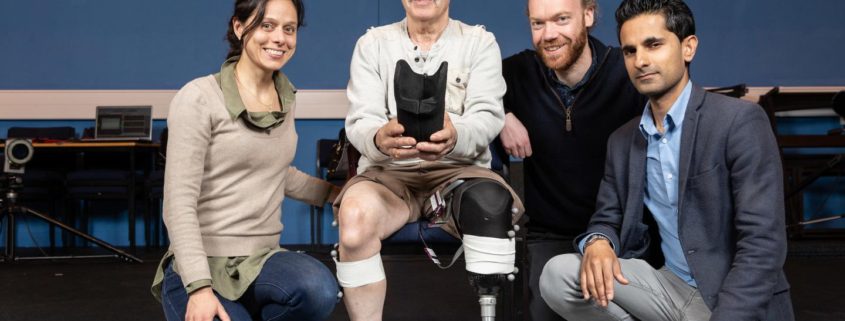Representatives from the university’s Department of Mechanical Engineering, Department for Health, Center for the Analysis of Motion, Entertainment Research, and Applications collaborated on the new approach. The first step involves scanning the 3D shape of an amputee’s residual limb, then leveraging the captured data to create a full digital model of the limb. Researchers use the digital model to design a personalized liner, which is manufactured using a cryogenic machine technique.
The approach has been tested on amputee volunteer John Roberts, who underwent amputation in 2017. He currently wears multiple socks and a silicone layer, but with the new approach he wears one specifically made and well-fitting liner. To test the liner, the researchers inserted pressure sensors into the socket to check the fit. They also leveraged motion technology to monitor the subject’s gait.
“We’ve found this new liner reduces the pressure on the stump significantly, reducing the risk of skin damage and making it more comfortable to walk,” said Elena Seminati, PhD, a lecturer in clinical biomechanics.
The researchers believe the new approach will lead to better fitting sockets and will result in more amputees accepting their prostheses.
“There’s a window of around 18 months where an amputee decides whether to use a prosthesis to learn to walk again or use a wheelchair. Unfortunately, this is a time the residuum changes in size and shape as part of the healing process, making it difficult to get a good fitting,” said Vimal Dhokia, PhD, a lecturer in the Department of Mechanical Engineering. “Our technology will help achieve a comfortable fit for the patient and really make a difference in helping them walk again and improve their quality of life.”
The researchers are developing the approach and testing it on new study subjects. Details were published in June in ScienceDaily.
Sources: ScienceDaily, O&P Almanac

